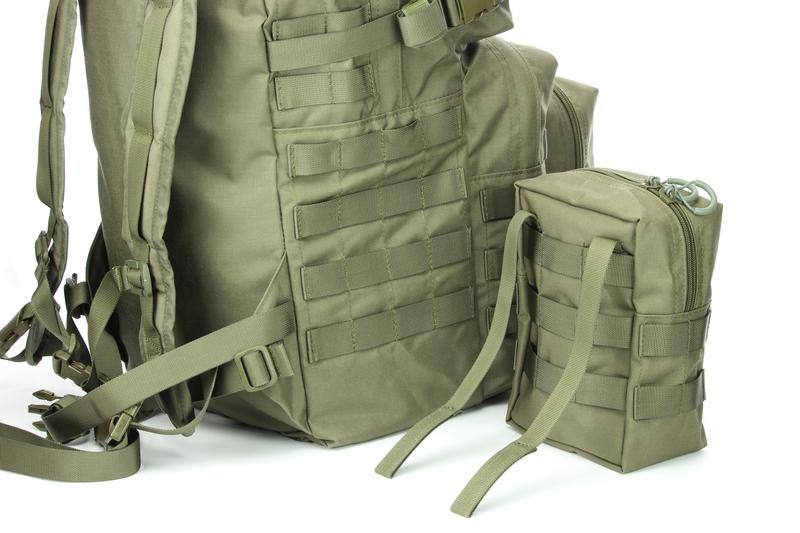
How to attach MOLLE / PALS pouches?
PALS (Pouch Attachment Ladder System) is a system for attaching personal equipment. It was developed for the MOLLE (Modular Lightweight Load-carrying Equipment) carrying system and is used in both the military and civilian sectors (e.g. for work clothing). The term "MOLLE" is often used colloquially even when strictly speaking it actually means "PALS".
This is a step-by-step guide on how to attach a PALS pouch to a carrier system.
In this specific case, the zipper pocket M is attached to the deployment backpack Standard. However, this example can also be applied to any other bag equipped with PALS. The MOLLE / PAL system is a standard that is manufacturer-independent. Thus, tactical equipment from other manufacturers can also be combined with that from Zentauron.
Thanks to the Zentauron Faststick system, the attachment is simple and does not require any additional components such as snaps, buckles or the like.
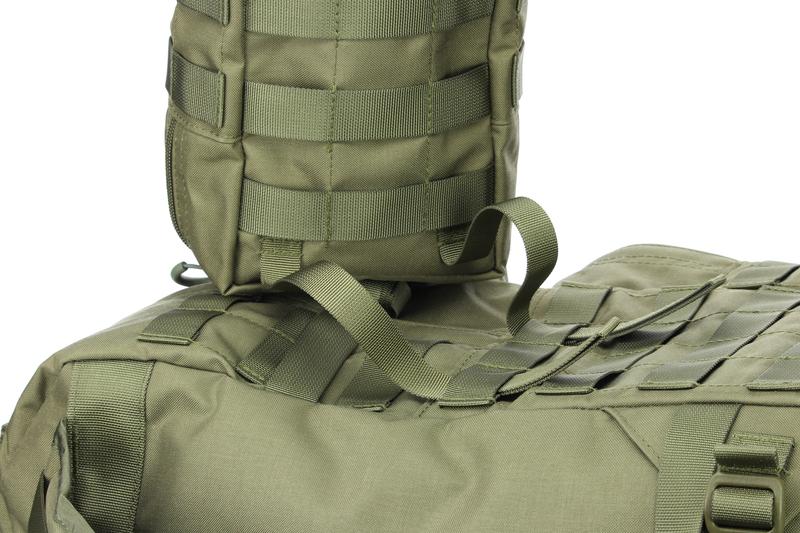
1. Prepare and use first strap loop on carrier
As preparation, place the bag on the carrier on a trial basis and determine where the bag is to be attached. Here it is important to ensure that there are still enough straps on the carrier for a secure connection.
The two straps on the back of the bag must now be pulled through the first strap loop on the carrier. Depending on the type of bag, this corresponds approximately to the later upper edge of the bag on the carrier.
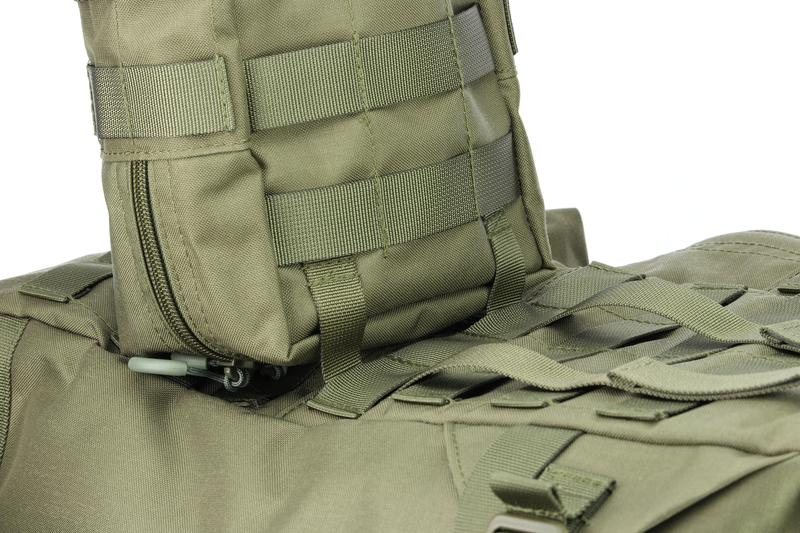
2. Tighten straps
Tighten the two straps so that the bag is firmly attached to the carrier.
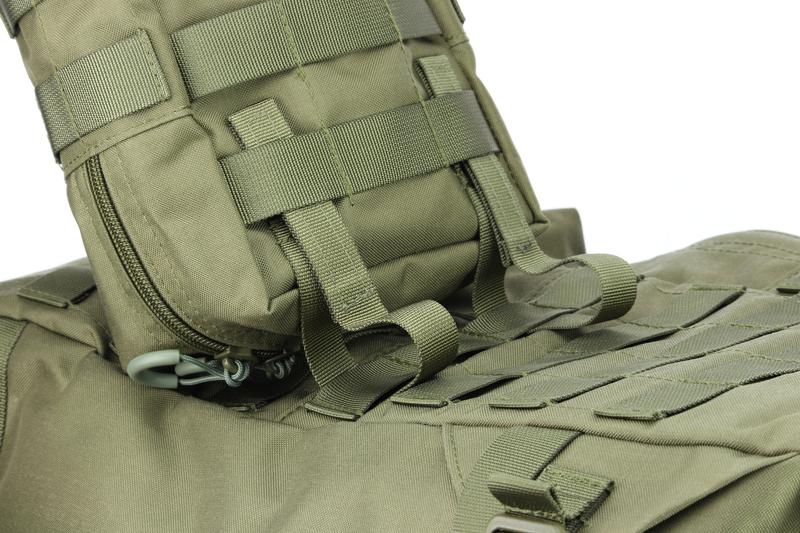
3. Pass webbing through the first loop on the pouch
Feed the two webbing straps back through the webbing of the pouch. Again, tighten the webbing at the end. The webbing is braided in, so to speak.
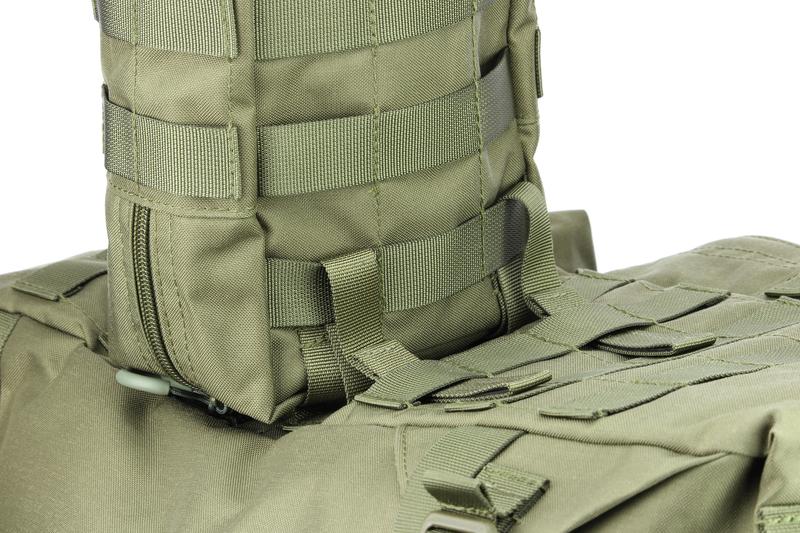
4. Use the next loops on the carrier
The first connection is made, now the webbing is again passed through the loops on the carrier and tightened again.
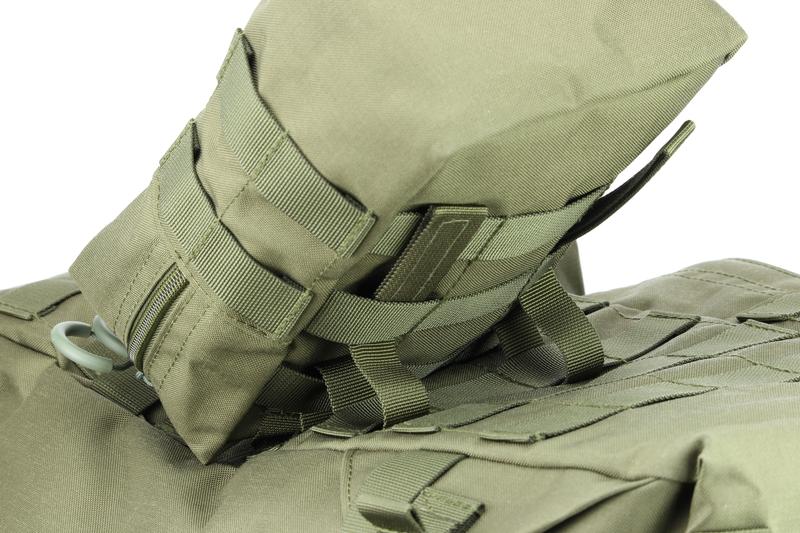
5. Pass webbing through the next loops on the pouch
Same principle as in step 3, only with the second loop on the pouch.
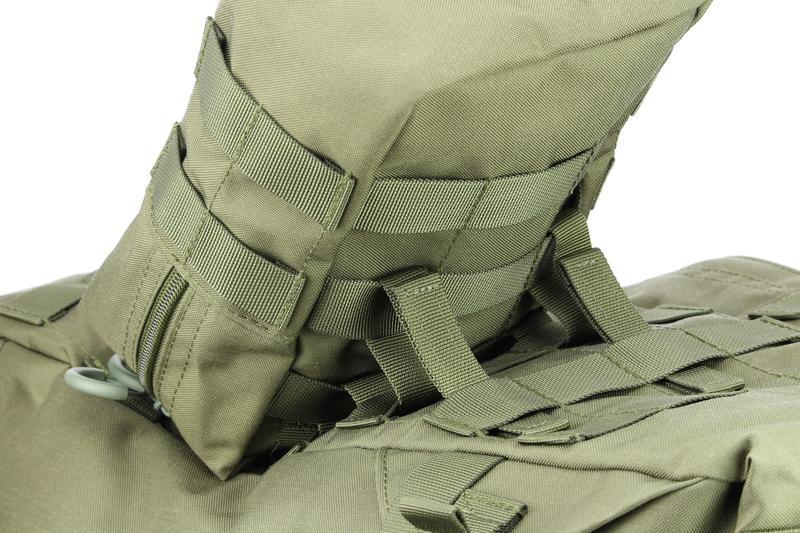
6. Use the next loops on the carrier
As in step 4, pull the webbing through the next loop on the carrier.
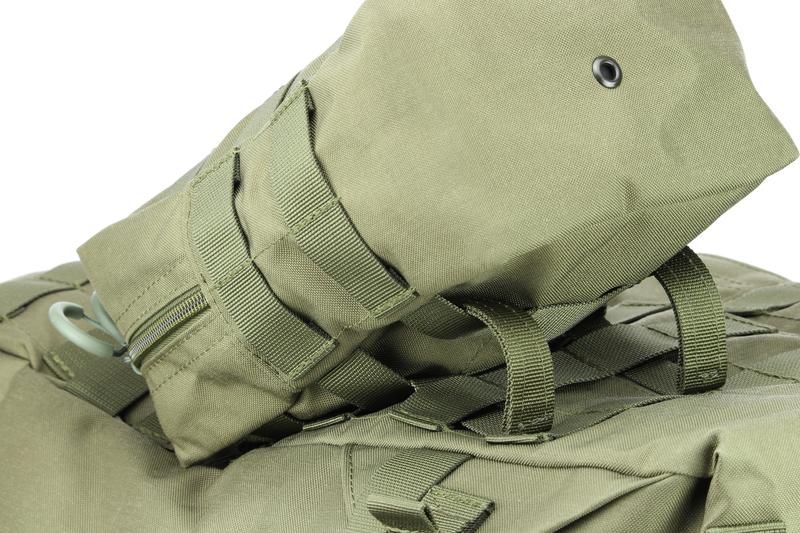
7. Push webbing through all loops of the pouch
When the webbing has been passed through all the loops on the carrier side, the end of the webbing is finally pushed through all the loops on the pouch side. This gives the connection the necessary hold and prevents it from coming loose on its own.
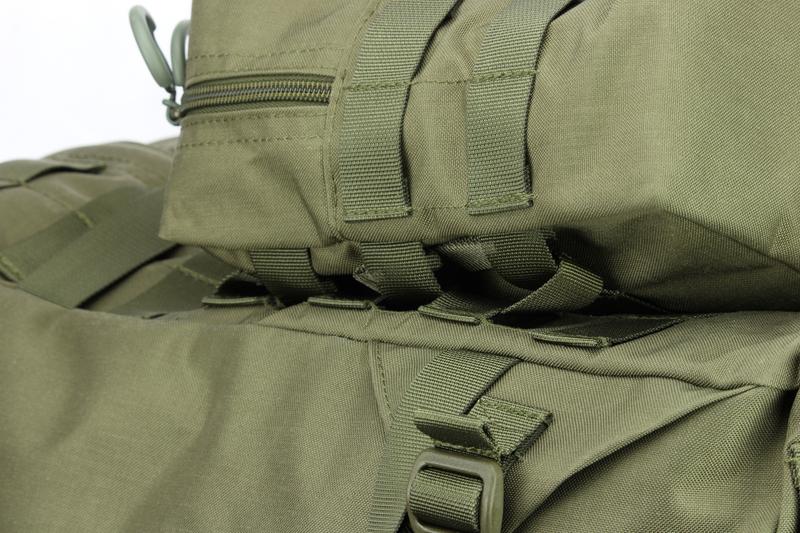
8. The pouch is fully connected to the carrier
The pouch has now been interwoven with the backpack, making it sturdily attached.
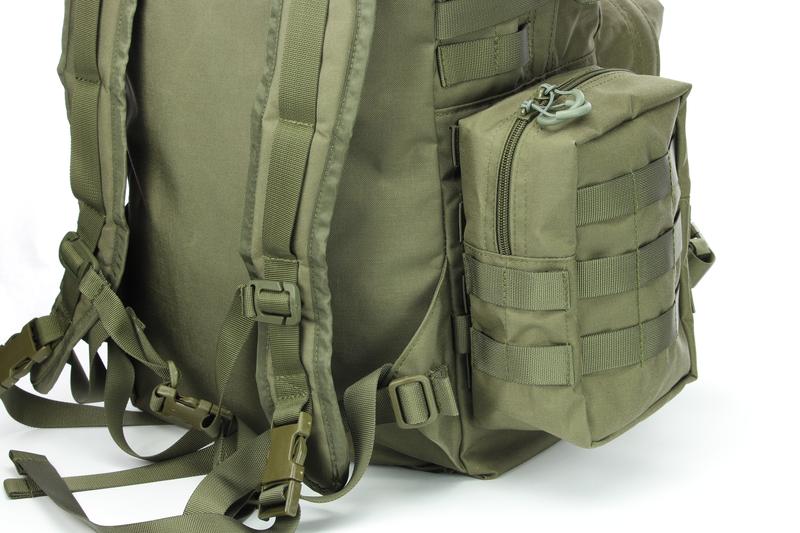
Universal connection through MOLLE / PALS
Most of the bags and carrying systems are connected via this system and can thus be flexibly combined with each other in a wide variety of ways.
Examples of carrier systems
With our MOLLE system pouches you will also find quite a few smaller bags, which are also modular expandable through their PALS loops.
Examples of pouches
- Military pouches like multipurpose pouches and accessories pouches
- Magazine pouches, magazine panels and ammunition pouches as used by military and police forces
- Medic pouches such as IFAK Pouches and bags for tourniquets for first aid and emergency medicine
- Radio equipment pouches for communication
- Admin Pouch and organizer for maps, writing pads, GPS device and smartphones
